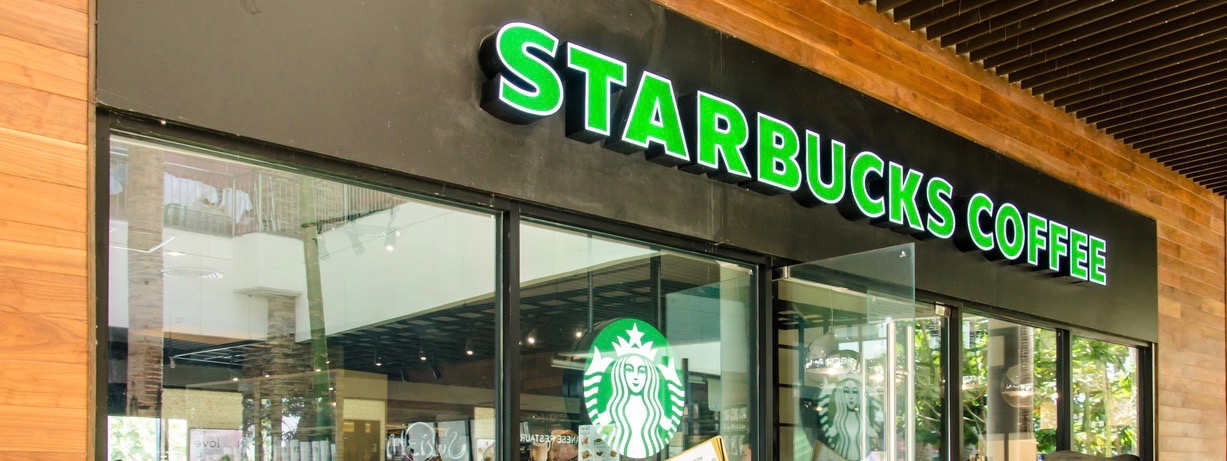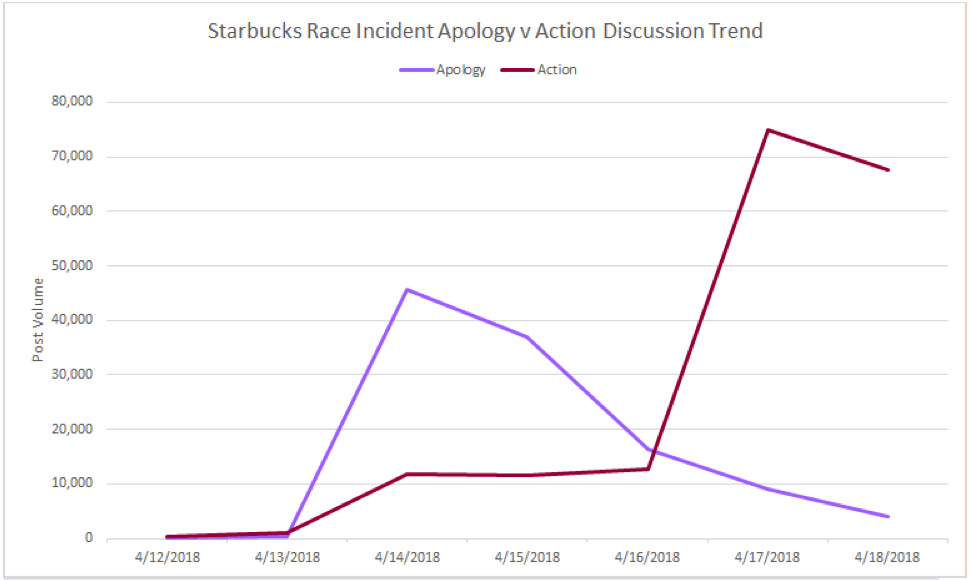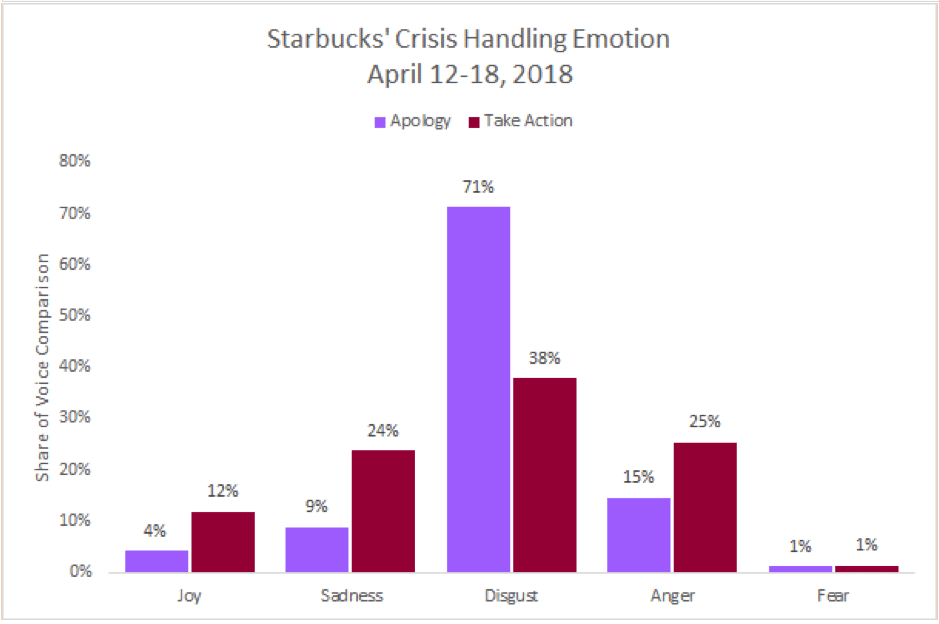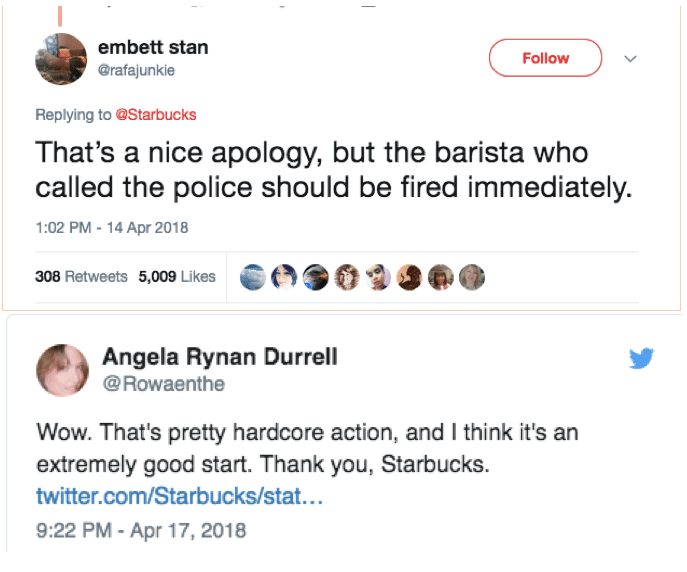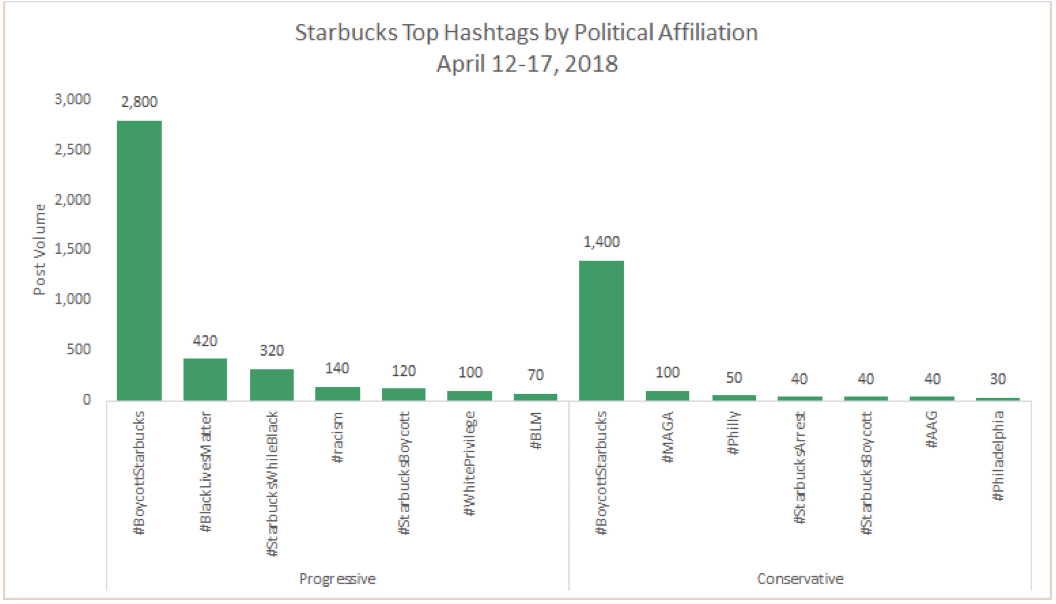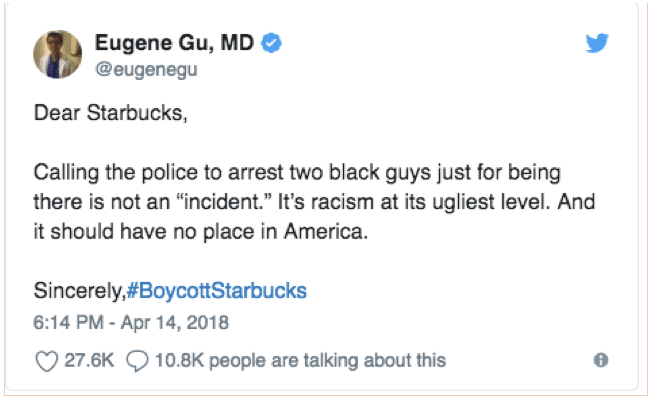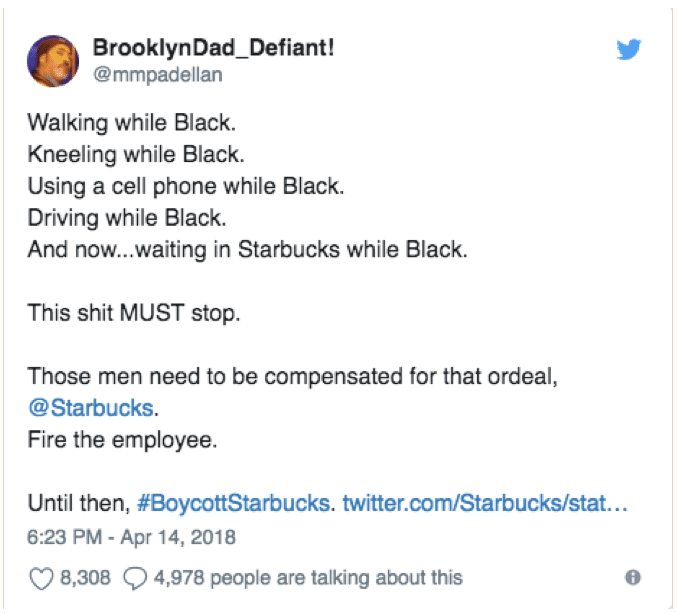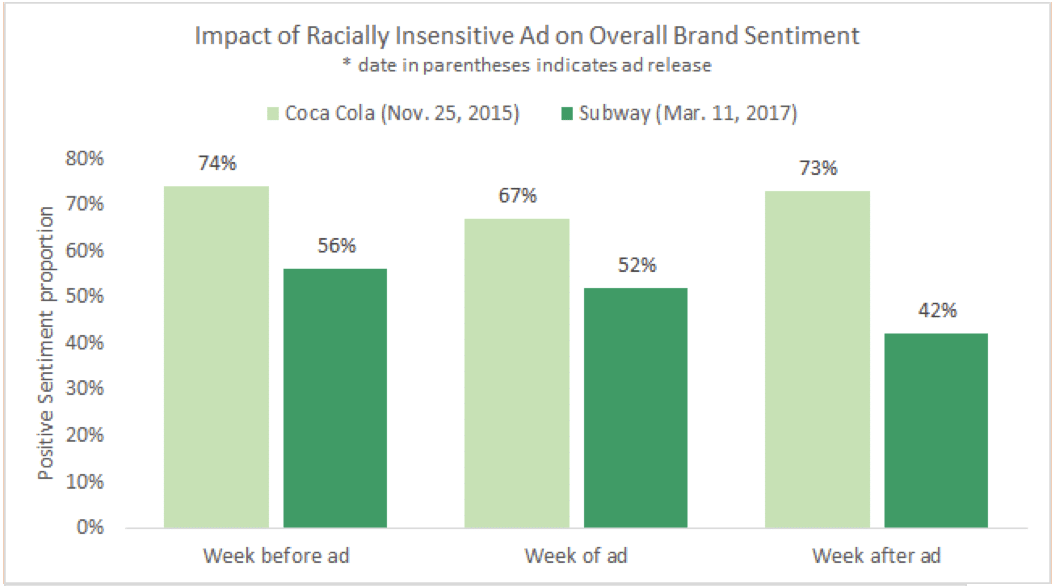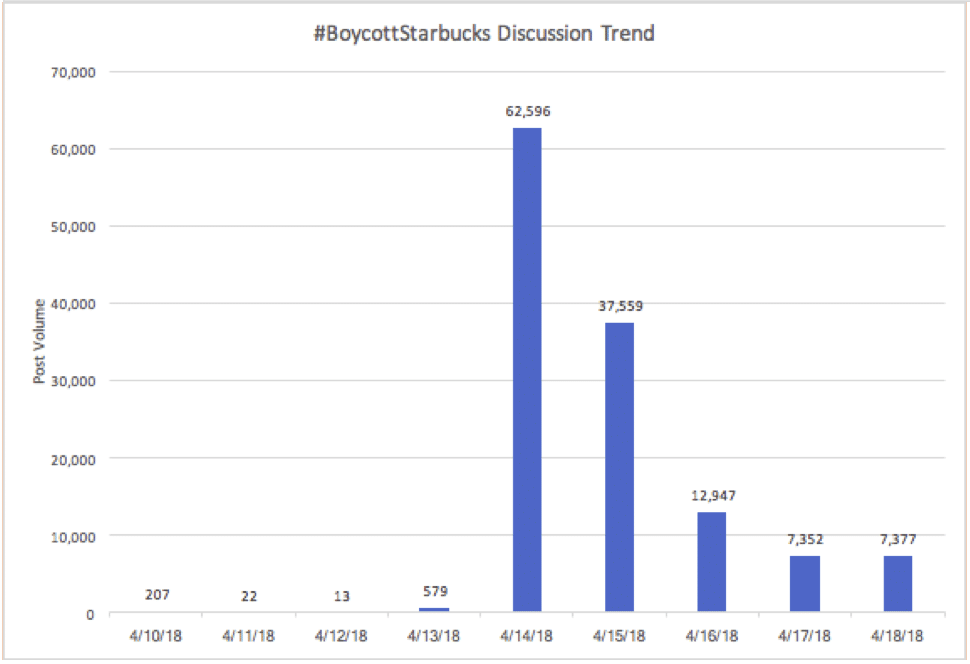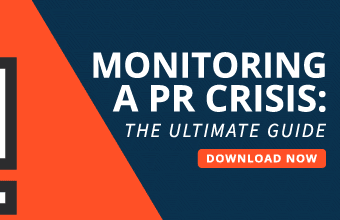On April 12, two black men arrived at a Philadelphia Starbucks ten minutes before a meeting with a friend. Within minutes, they were in handcuffs for “trespassing” on store property without purchasing anything. The story went viral in no time.
Social media has proven to be a breeding ground for public relations nightmares. As you can see with Starbucks, the social conversation about the brand exploded after news broke of the incident—from an average of less than 100k daily posts, to a peak of more than 600k.
We looked at the social data to see what brands can learn about responding to a PR nightmare, such as how negatively their brand suffers, the most effective ways to respond, the audiences involved, and expected rates of recovery. 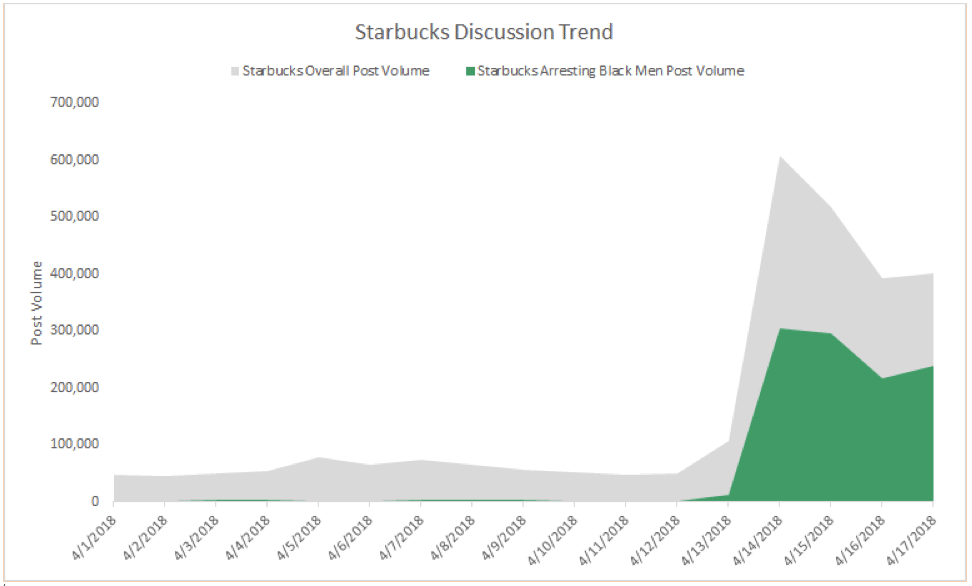
Don’t Just Apologize, Act
They say actions speak louder than words, and the “they” in this scenario, are consumers on social media. When tracking conversations about the Starbucks apology and their announcement to close 8,000 stores in May, we found that there was much more social interest in Starbucks’ action than their carefully worded apology.
In addition to the higher volume of posts, there was a much higher rate of disgust in response to their apology than to their announcement to close stores. 71% of the conversation about the Starbucks apology was disgusted with it, as opposed to 38% of those discussing the actions were disgusted with that decision. Joyful conversation was also three times larger in terms of the store closings than it was to their apology.
Brands can see, from this data, that it is better to take concrete actions in response to a problem than to simply apologize for it.
Know Your Audience
Understanding the audiences driving your brand’s conversation is another important factor in knowing how to respond to a crisis. When looking at the Starbucks social conversation, we found that opposing political affiliations are taking part in the online conversation, but for different reasons.
Both progressive and conservative affiliations use the hashtag #BoycottStarbucks the most. However, those with more progressive leanings are using the hashtag in response to the racial profiling incident itself, whereas conservatives are using the hashtag in response to Starbucks taking a stance against the employee for calling the police, stating that it was an overreaction to the incident. Conservatives are also rattled by the store closures in May.
Other popular hashtags amongst progressives are #BlackLivesMatter, #StarbucksWhileBlack, and #racism. Popular hashtags unique to conservatives are #MAGA, #Phillly, and #StarbucksArrest.
This may create ambiguity in how a brand should respond, given that there are two competing conversations happening here. Given that, Starbucks should know that they won’t make everyone happy in whatever way they choose to respond, so the best course of action is to do what they think is right, but to do it quickly.
Think About the Big Picture
A key takeaway that Starbucks, and other brands, can take for PR crisis management is understanding the rate of recovery from a mishap like this. Looking at past brands’ PR nightmares, such as the Coca-Cola indigenous peoples ad from 2015 that sparked outrage, or the Italian hero Subway ad from 2017, you can see that brands experience an immediate downturn in positive sentiment, and can begin making a recovery fairly soon, but might not return to their previous positive sentiment for quite a while.
Social media is fickle, and public interest rarely lasts long. Looking at the most widely used hashtag associated with the incident, #BoycottStarbucks, you can see that its usage has already fallen dramatically. While it’s still trending, in just three days it decreased from over 62,000 posts to about 7,000 posts. Social media conversation is already beginning to lose interest, and Starbucks should expect to ride out the storm, but few things are certain in life: death, taxes, and social media quickly forgetting a corporate scandal.
Conclusion
Public relations scandals will never fare well for a brand. But with Starbucks’ recent race-fueled social media nightmare, brands can find a best course of action by looking deeper into social data. The key takeaway is that people respond better to a concrete action rather than an apology, and that brand perspective is bound to take a hit, but it will recover as interest fleets from social media’s short attention span.

